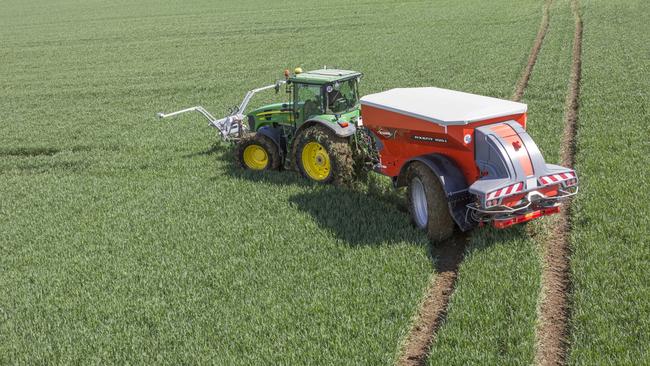Converting nitrogen directly to nitrates with renewable energy not likely, uni says
Ambitious science aiming to cut fertiliser emissions and farm costs is not proven, a new study shows. But here’s what might work.

Monash University scientists say research into green nitrate fertiliser production showed it was practically impossible to efficiently convert nitrogen gas from the air to nitrates using renewable energy under ambient conditions.
The Monash School of Chemistry reviewed 50 published studies claiming to
produce green nitrate fertilisers, and found none successfully resulted in a sustainably-produced alternative to existing products.
According to Monash, research into producing nitrates directly from nitrogen gas in air and water using renewable energy had, so far, had contamination flaws that resulted in naturally-occurring atmospheric contaminants incorrectly being recorded in the final product.
In natural biological systems nitrogen gas is converted to ammonia and subsequently to nitrates through a series of microbial processes where microorganisms transform compounds into plant usable forms.
Research investments have attempted to fast track this process, and compete with current nitrate fertiliser manufacturing processes, which now accounts for around two per cent of global greenhouse gas emissions using fossil fuel-derived energy.
Monash Associate Professor Alexandr Simonov, who has been working in this space since 2016, said the difficulty was in the quantum of energy required to break the nitrogen gas molecule.
Although the area of research attracted substantial funding, achieving the goal currently “seems to be impossible,” he said.
Yet, Sir John Monash Distinguished Professor Douglas MacFarlane said green nitrate could
revolutionise the agricultural industry.
“A portable unit for green fertiliser synthesis powered by a solar panel would allow a farmer
to become independent from large scale fertiliser supply, cutting the costs and increasing the
security of national food production,” Professor MacFarlane said.
“However, we are not there yet, and researchers might need to rethink the strategies
currently explored in this critically important field.”
Prof Simonov said work was continuing at Monash looking at producing green ammonia, which was one of the most important chemical components of all fertilisers, such as urea and nitrates.
Ammonia could be directly injected into the soil as a fertiliser, or used as a fuel source to replace diesel, he said.
A spin-off company Jupiter Ionics was now investigating development of the technology and commercialisation of units that could be used by farmers, and only require electricity - perhaps solar - water and air.
However, he agreed it was sometime off. “On the global scale, I think the world is about five years off them becoming more of less readily available but about a decade at least for all the testing and trials,” he said.
“This is one of the most important chemistry challenges of the 21st Century.
“It would make farmers independent of the fossil fuel (industry) and decrease their costs, and emissions (from fertiliser production) would be zero.”
Birchip Cropping Group extension manager Grace Hosking said farmers were increasingly using variable rate fertilisers to help manage rising costs of production.
“Growers are increasingly soil testing, so they only apply fertilisers where needed, and using variable rate technology, with less blanket applications.”
Ms Hosking said ammonia technology would be “amazing” if practically applicable.





